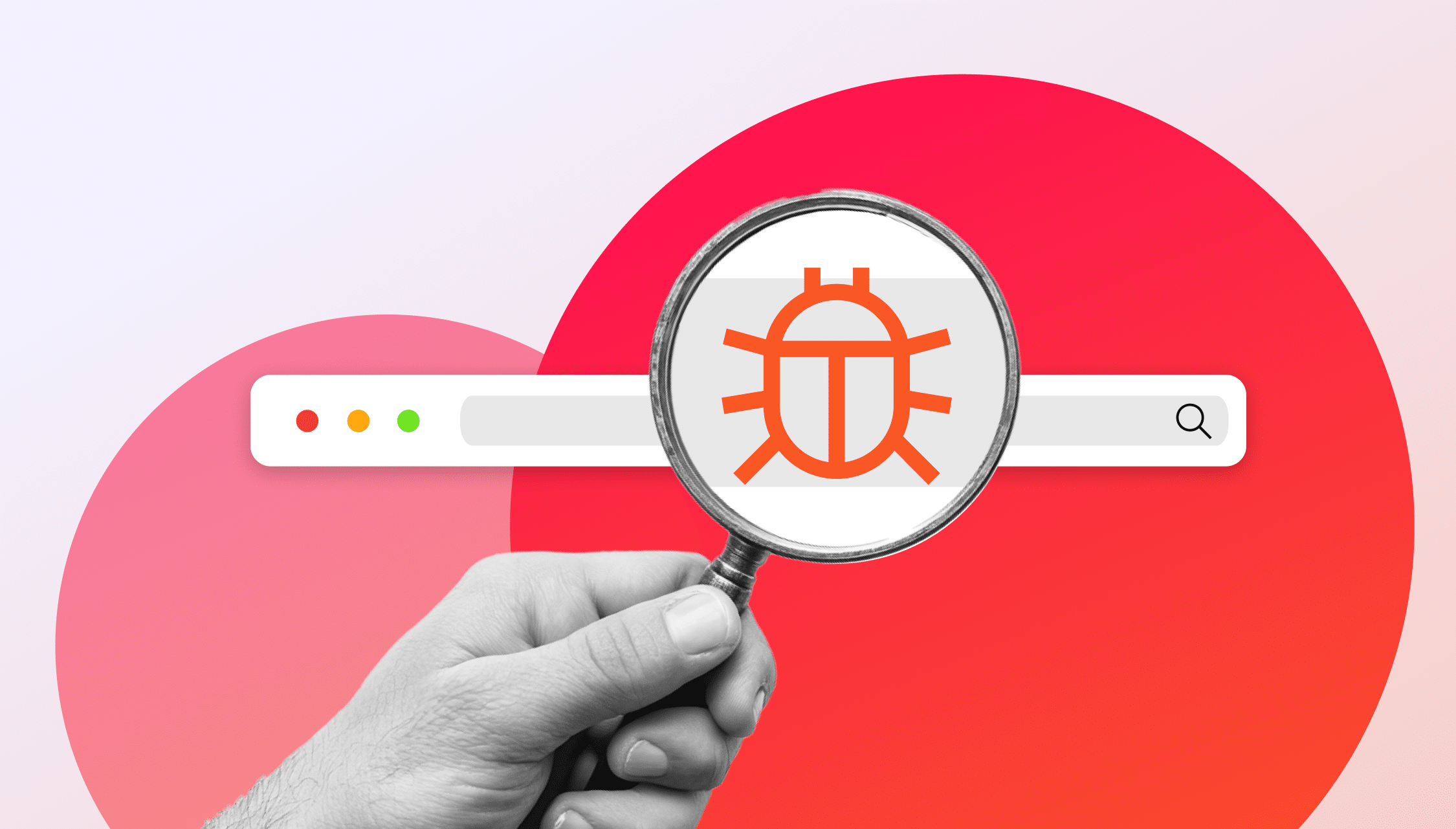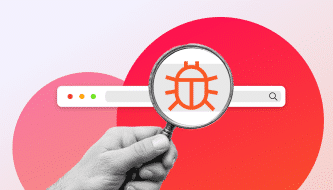
What is DNS spoofing and how can you prevent it?

DNS spoofing is one of the most persistent threats facing the DNS. Learn how it works, why it matters and which measures help protect domains, networks and users.
Published by

Simone Catania
Date
The Domain Name System (DNS) is often described as the “phone book” of the internet. It translates numerical IP addresses into human-readable domain names, enabling people to reach websites, apps and services without memorizing long strings of numbers.
The system, developed in the early 1980s as part of a university research project, was primarily intended to solve a practical naming problem for a growing academic network. Security considerations were not part of the original design. As a result, DNS remains open to manipulation, and although several security protocols have been introduced over the years—such as DNSSEC for data integrity, DNS over HTTPS (DoH), and DNS over TLS (DoT) for transport encryption—the system is still vulnerable to misconfiguration, incomplete adoption, and targeted attacks.
For domain experts, hosting providers and administrators, the message is clear. DNS spoofing attacks can interrupt services, expose credentials and even pave the way for fraudulent TLS certificates or phishing websites that imitate trusted brands. Knowing how DNS spoofing works and how to prevent it has become an essential skill in DNS management.
What is DNS spoofing?
DNS spoofing is an attack where false DNS data is inserted into the resolution process. Instead of connecting to the correct IP address, users are redirected to a server controlled by the attacker.
This type of manipulation is possible because DNS queries usually run over the User Datagram Protocol (UDP), which is lightweight and efficient but does not provide authentication. While UDP is the default, DNS also uses the Transmission Control Protocol (TCP) for larger responses and zone transfers—and both transports can be targeted in different ways. Unless safeguards are in place, forged responses can still be accepted as if they were legitimate.
Common forms of DNS spoofing attacks
Over the years, attackers have developed multiple ways to exploit DNS weaknesses. The most common forms of DNS spoofing attacks include:
- Cache poisoning: A forged response is accepted and cached by a resolver. Every subsequent user query is redirected until the cache entry expires.
- On-path tampering (MITM): An attacker with network access intercepts DNS queries and alters the responses before they reach the client.
- DNS hijacking via configuration changes: Compromised routers, endpoints or resolvers are reconfigured to use a rogue DNS server, often through malware or weak admin credentials.
- Registrar or zone takeover: By compromising an account at a registrar or DNS provider, attackers can directly alter authoritative records.
How a classic cache poisoning attack works
One of the most well-known examples of DNS spoofing is the Kaminsky attack, publicly disclosed in July 2008. It highlighted just how practical cache poisoning could be at the time:
1The attacker forced a resolver to query many non-existent subdomains (e.g., random123.example.com, random124.example.com), creating multiple outstanding requests.
2The resolver passed the queries on to the authoritative server.
3While the resolver waited, the attacker flooded it with forged responses, each containing different transaction IDs. By exploiting the birthday paradox, the attacker increased the probability of a collision.
4If a forged response arrived first and matched the expected transaction ID and source port, the resolver accepted and cached the malicious data.
5From then on, users querying the affected domain were redirected until the cache entry expired or was cleared.
The attack worked because of limited entropy. The transaction ID was only 16 bits long, meaning just 65,536 possibilities, and many resolvers used predictable source ports.
Today, resolvers use additional defenses against DNS spoofing. These include source-port randomization (adding another ~16 bits of entropy), 0x20 case randomization (randomly varying the case of letters in the query name so responses must match exactly), and query minimization as defined in RFC 7816, which reduces information leakage to upstream servers. Google Public DNS has enabled 0x20 case randomization globally by default since 2022, covering over 90% of its UDP traffic and significantly reducing the risk of cache poisoning. Together these measures make off-path spoofing far harder to achieve.
The Kaminsky exploit in brief
1Trigger queries for many non-existent subdomains.
2Flood the resolver with forged replies.
3Exploit probability to guess the correct transaction ID and source port.
4Poison the cache with a malicious record.
5Redirect users until the cache is cleared or expires.
DNS spoofing vs. cache poisoning
The terms DNS spoofing attacks and cache poisoning are often used interchangeably, but they are not identical:
- DNS spoofing attacks broadly refer to forging DNS responses, whether by IP spoofing or on-path tampering.
- Cache poisoning specifically describes inserting fake records into a resolver’s cache.
Both achieve the same outcome—redirecting queries to malicious destinations—but by slightly different methods.
| Aspect | Details |
| Definition | DNS spoofing is a type of cyberattack where an attacker alters DNS records to redirect internet traffic from a legitimate website to a malicious one. |
| Goal of attack | Steal sensitive data (like login credentials), distribute malware, or impersonate trusted websites. |
| How it works | Attackers inject false DNS responses into a DNS resolver’s cache, making users unknowingly connect to fraudulent IP addresses. |
| Common techniques | – Cache poisoning (inserting fake DNS entries) – Man-in-the-middle (intercepting DNS queries) – Compromised DNS server manipulation |
| Impact | – Users are redirected to fake websites – Phishing and credential theft – Malware infection – Loss of trust in online services |
| Prevention methods | – Use DNSSEC – Keep DNS servers patched and updated – Configure DNS resolvers to use random port and transaction IDs – Implement firewalls and intrusion detection systems |
| Detection signs | – Unexpected redirects to unfamiliar websites – Browser security warnings – TLS/SSL certificate mismatches – Network traffic anomalies |
| Related attacks | – Phishing – Pharming – Man-in-the-middle (MITM) attacks |
What are the consequences of DNS spoofing?
DNS spoofing creates serious problems for both organizations and users. Once attackers redirect traffic, they can cause significant damage:
- Phishing and credential theft: Attackers redirect users to fake versions of legitimate login pages that look convincing. Banking sites, corporate VPNs, and cloud services are common targets. When users enter their credentials, attackers capture usernames, passwords, and multi-factor authentication codes. These stolen credentials are then used for unauthorized access, account takeovers, or sold on underground markets.
- Malware distribution: Spoofed domains serve malicious software disguised as legitimate downloads, software updates, or browser plugins. Users who think they are downloading genuine applications instead receive trojans, ransomware, or cryptominers. This approach works particularly well because the malicious software appears to come from a trusted source.
- Man-in-the-middle attacks: DNS spoofing allows attackers to intercept traffic comprehensively. They position themselves between users and legitimate services, capturing sensitive communications including API keys, session tokens, and business-critical data. Email traffic and application programming interfaces are especially vulnerable, often leading to widespread service outages.
- Data breaches and financial losses: Security research shows the severe financial impact of DNS compromise. Attackers can expose databases, customer records, and payment information, resulting in regulatory fines, legal liability, and direct financial theft. Organizations often face additional costs for forensic investigation, system recovery, customer notification, and credit monitoring services.
- Reputation damage: When customers encounter malicious redirects or fraudulent versions of trusted sites, confidence erodes rapidly. Brand damage can persist long after the technical issue is resolved, affecting customer retention, partner relationships, and market valuation. Social media amplifies the impact as users share negative experiences.
- Service disruption: DNS spoofing can trigger cascading failures beyond direct attacks. Manipulated email records disrupt email delivery, affecting business communications and automated systems. APIs and microservices that depend on DNS for service discovery may fail completely, bringing down complex applications and creating operational problems.
Reducing the risk of DNS spoofing
There is no magic solution that eliminates DNS spoofing. But here’s the good news: layered defenses can dramatically reduce your risk and limit the damage if an attack does succeed.
For domain owners and administrators:
- Enable DNSSEC: DNS spoofing prevention begins with enabling DNSSEC. Think of DNSSEC as a digital signature for your DNS records. It uses cryptographic signing to let resolvers verify that responses are genuine. The catch? Adoption is still patchy worldwide. According to the Global Domain Report 2025, overall deployment remains low—just 13% at best for domains under ccTLDs. The European Nordic countries are leading the charge, with Denmark (.dk), Sweden (.se), and Norway (.no) showing impressive adoption rates between 65-76%. While DNSSEC is your strongest defense against cache poisoning, it won’t help if someone compromises your registrar account or hijacks your resolver.
- Lock down your registrar and DNS provider accounts: Your registrar and DNS provider accounts are prime targets. Start with multi-factor authentication using hardware tokens or authenticator apps. Turn on registry locks (sometimes called client locks or transfer locks) to block unauthorized domain transfers. Set up role-based access so only the right people can make DNS changes and configure alerts for any modifications to your critical records. Make it a habit to review access logs monthly and keep a current list of who has access.
- Harden resolvers: This is where you make DNS spoofing attacks mathematically impractical. Use source-port randomization across the full range of 65,536 ports, combined with randomized transaction IDs—this creates maximum unpredictability. Enable something called 0x20 case randomization, which randomly varies whether letters in query names are uppercase or lowercase. Responses must match exactly, which effectively doubles your protection. Turn off open recursion to prevent attackers from abusing your resolvers in amplification attacks. Modern resolvers also support DNS cookies, which add lightweight security tokens to queries and responses for extra protection against remote spoofing attempts.
- Protect your updates and transfers: Secure zone transfers by using Access Control Lists to specify exactly which servers can request your zone data. Use Transaction Signature (TSIG) authentication or Transport Layer Security (TLS) encryption for transfer protocols. For dynamic DNS updates, authenticate requests with TSIG keys or GSS-TSIG. Disable any services you don’t need and maintain strict control over who can initiate zone transfers or updates.
- Monitor continuously: Set up passive DNS monitoring to track how your domains resolve from different locations worldwide. Deploy monitoring from multiple geographic points to quickly spot inconsistencies in DNS responses. Configure automated alerts for unexpected changes to critical records like A/AAAA, NS, and MX records. Consider your Time-To-Live (TTL) values carefully—while longer TTLs boost stability, shorter ones (300-3600 seconds) limit how long successful cache poisoning attacks can persist. Also monitor Certificate Transparency logs for unauthorized TLS certificates that might signal ongoing DNS hijacking.
For networks and users:
- Choose resolvers that validate DNSSEC and support encrypted DNS: Use resolvers that both validate DNSSEC signatures and support encrypted transport protocols. DNSSEC validation confirms response authenticity, while DNS over TLS (DoT) or DNS over HTTPS (DoH) prevents attackers from intercepting or modifying your queries and responses. Just remember that encryption alone can’t protect against cache poisoning attacks that happen at the resolver itself.
- Never ignore certificate warnings: When DNS gets spoofed, you’ll often see TLS certificate problems—mismatches, invalid certificates, or self-signed certificates. This happens because attackers typically can’t get valid certificates for domains they don’t control. Train your users never to ignore browser security warnings and implement certificate pinning for critical applications where feasible.
- Control your DNS traffic: Configure your network infrastructure to prevent unauthorized DNS traffic. Block outbound traffic on UDP port 53 except to your approved recursive resolvers, forcing all DNS queries through your managed infrastructure. Implement ingress and egress filtering to prevent IP address spoofing from your network. Keep router and endpoint configurations secure with regular firmware updates and strong administrative credentials. Consider deploying DNS filtering solutions that block known malicious domains at your network perimeter.
Quick checks
Regular checks help ensure that DNS remains healthy and resistant to tampering:
- Query your domain using dig +dnssec yourdomain.tld and verify the AD (Authenticated Data) flag appears in the response header.
- Regularly query your critical DNS records from multiple public resolvers and compare responses. Inconsistencies may indicate cache poisoning, configuration errors, or ongoing attacks. Automated tools can perform these checks continuously and alert on anomalies.
- Review registrar and DNS provider account access logs monthly, enable real-time change notifications and maintain an audit trail of all DNS modifications. Consider implementing approval workflows for critical DNS changes.
How are DNS spoofing techniques evolving?
The 2008 Kaminsky exploit was a wake-up call that led to widespread adoption of source port and transaction ID randomization. But attackers haven’t been sitting still—they’ve continued developing new ways to work around these protections.
- SAD DNS (Side-channel AttackeD DNS, 2020): This attack proved that cache poisoning was still possible despite modern defenses. SAD DNS exploits subtle information leaks in Linux network stacks to figure out the source port numbers that DNS resolvers use. By sending specially crafted ICMP error messages and analyzing the responses, attackers can narrow down the possible source ports, making brute-force attacks feasible again. When disclosed, about 35% of open DNS resolvers and 85% of popular public DNS services were vulnerable. The research was presented at ACM CCS 2020 and prompted quick fixes from major DNS providers.
- DNSpooq (2021): This was a collection of seven vulnerabilities in dnsmasq—a lightweight DNS forwarder that’s embedded in millions of routers and IoT devices. The flaws exposed systems to both cache poisoning and remote code execution. Because dnsmasq is built into so many consumer and enterprise devices, patching proved challenging, leaving many systems vulnerable for months.
- NAT Slipstreaming v2.0 (2021): While not strictly a DNS vulnerability, this technique demonstrated how DNS spoofing could be combined with other protocol weaknesses for maximum impact. Attackers could bypass NAT and firewall protections by manipulating DNS responses, showing how DNS manipulation serves as a foundation for more complex, multi-vector attacks.
These evolving DNS spoofing attacks underscore that DNS security isn’t a “set it and forget it” proposition. While fundamental protections like DNSSEC and resolver hardening remain essential, you need layered security strategies, current threat intelligence and regular assessments of your DNS infrastructure against new attack methods.
Strengthening DNS security for the future
DNS sits at the heart of how the internet works. Yet its 1980s design continues to make it an attractive target for attackers. DNS spoofing and cache poisoning might not dominate the headlines like data breaches do, but when they succeed, the consequences can be devastating—disrupting services, exposing sensitive data, and eroding the trust that makes digital commerce possible.
Protecting against these threats demands a comprehensive, layered approach that goes well beyond any single security measure. DNSSEC offers the strongest cryptographic defense against forged responses, but adoption remains frustratingly low outside pioneering regions like the Nordic countries. Hardening resolvers through randomization techniques, using encrypted transport protocols like DoT and DoH, and securing registrar accounts all help raise the bar for attackers. Equally crucial is continuous monitoring that can spot problems quickly, limiting how long and how much damage successful DNS spoofing attacks can cause.
The message for domain operators and hosting providers is straightforward: regularly review your DNS infrastructure, enable DNSSEC where it makes technical and operational sense, and work with modern resolvers that implement the latest protections—including source port randomization, 0x20 encoding, and DNS cookies. These steps don’t just protect your organization and customers; they contribute to the broader trust that users place in the Internet as a secure platform for communication and commerce.
As DNS attacks grow more sophisticated and our digital economy becomes increasingly dependent on reliable name resolution, proactive defense transforms from a technical nice-to-have into a business necessity.
Be sure to explore the InterNetX Domain Security Information Center for more insights on domain security and the latest trends.





